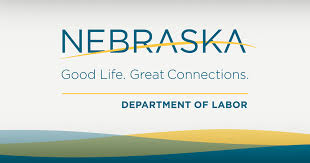The City of Alliance is located in the center of the Nebraska Panhandle. Bordered on the south and east by the sandhills prairie it was dubbed “An Oasis in the Sandhills”. The City began on March 28, 1888 and soon became a leading railroad and business center.
Alliance was founded on March 28, 1888, after the creation of Box Butte County from the division of Dawes County. The name Box Butte was elected after the prominent sandhill in the northeast section of the newly formed county.
The origins of the name of Alliance can not be as easily determined. The most often accepted story alleges that the source was a J.N. Paul. Mr. Paul was an early Engineer with the Burlington and Missouri River Railroad and suggested the name Alliance after his hometown of Alliance, Ohio.
The Burlington and Missouri River Railroad played an important role in the settlement of Northwestern Nebraska. Encouraged by Congress, railroads were finding that to be profitable, settlement was necessary. Advertisements in the East and overseas were part of the strategy to encourage settlers into the new country. Free land and individual freedoms were too much for the average European to ignore. By 1900, the population of Western Nebraska was over 10% from foreign countries.
Many of the original settlers of Alliance, Box Butte County and Western Nebraska were settlers from other areas of the United States. Veterans of the Civil War were given special consideration for homesteads. For honorably serving their country in war, they were allowed to take 160 acres of virgin country for their own. Many of Alliance’s first settlers were from Illinois and Iowa where too many people drove early pioneers West in search of fewer people, better land, and greater opportunities.
In June of 1887, agents of the Lincoln Land Company, a subsidiary of the Burlington and Missouri River Railroad bought most of the school section where Alliance was later built. Part of the land was designated for use by the railroad for right-of-way, shops, and a roundhouse. But no other sale of land was made while the wait for the rail continued.
The small town of Grand Lake, mostly tents and a few small frame buildings grew up east of what would become Alliance. On February 25, 1888, public sale of lots around those already purchased by the Lincoln Land Company for railroad purposes, took place. Plots in the newly formed town quickly sold. People began flooding in by train and wagon.
The schools and churches started in Grand Lake were continued in Alliance and were joined by more. One of the areas worst problems was created with the need for teachers. The school board soon discovered any young female was quickly married. For a time, school boards even publicized in Eastern newspapers for young women of plain and homely countenance to come West and teach. But even the less beautiful married quickly. Frustrated school boards then hit upon another solution. Contracts often included a clause preventing a teacher from marrying for two years. For its time, a restrictive but necessary clause.
Early churches in Alliance included the Catholic, Presbyterian, and Methodist faiths. Church buildings were built as soon as possible. For smaller denominations, the backs of store buildings sufficed until a church could be completed.
The town grew rapidly. The census of 1890, only two years after the founding of Alliance gave the town a population of 840. By 1896, the population had more than doubled to 2,200 an increase of 1,360. It would be almost 100 years later before Alliance would increase the population proportionally as much.
One of the first groups formed in Alliance was the Volunteer Fire Department. In less than one year, three fires gutted the business districts along Third Street and Box Butte Avenue. The first started in the meat market of C. Shelter at First Street and Box Butte Avenue. A total of nine buildings were lost.
The second fire on January 11, 1893 started in the stable of a furniture store and spread due to a strong wind. The third fire started in the G.L.E. Klingbeil building on July 3, 1893. Five buildings received damage from this fire. In a special election held on May 31, 1893, a majority vote was made for a bond issue to construct a water system. Major reasons given for the need included the fires along Box Butte Avenue. A city ordinance was also passed requiring construction of new buildings be of fireproof materials. For the first few buildings, the brick was brought into Alliance by rail but soon two brick yards were established in Alliance.
Alliance became a center for homesteaders and ranchers needing materials and shipping crops and cattle to Omaha and other markets. The Nebraska Stockgrowers Association began in Alliance in 1889 as a way to combat a major problem with cattle rustling.
In a long fight covering three different elections and numerous court appearances, the Box Butte County Courthouse was transported by rail from Hemingford to Alliance through the engineering skills of E.W. Bell, a bridge foreman with the Chicago, Burlington, and Quincy (C.B. & Q.) Railroad. This feat started on June 21, 1899 with preparation of the building and continued until July 5, 1899 with the placement of the Courthouse on the lot north of 5th Street and Box Butte Avenue. Descriptions of the job were written in Harper’s Magazine and Scientific America.
As Alliance approached the 20th Century, business was good, the railroad strong, and new settlers were moving into the area at a rapid pace. A discrepancy occurred in the population figures of the 1890 census that required a national solution. Although county population was up, the population of farmers went down, suggesting that more people were settling in town than on farms. This problem was repeated through most of the Great Plains area. Nebraska had a special, large area where farming was almost impossible – the Sandhills. The Kincaid Act in 1904 allowed a claim of 640 acres of land rather than the original 160 acres. This allowed the arid Sandhills area to be settled and brought a large number of people into Alliance to file for Kincaid grants on June 24, 1904. The rush lasted all week.
Alliance continued to grow. New hotels, businesses, offices, churches, a depot and home were built. In 1913 Alliance celebrated its 25th Anniversary. Just 12 miles east of Alliance, Antioch enjoyed a quick boom from Potash found in the Sandhills lakes of the area. The end of World War I brought the boom to a quick conclusion. The population of Alliance in 1920 reached nearly 6000 and Alliance was considered “The Queen City of the Plains.”
In 1921 Alliance became the first city in Nebraska to change to the Council/Manager form of government. The Nebraska Potato Growers organized and made Alliance “The Potato Center of Nebraska.” It is an interesting fact that to this day, the high school newspaper is still called “The Spud.” In the 1920’s, Alliance’s famous brick streets became a reality. Sewers were rebuilt in the 1920’s to help combat a particular smell that made Alliance infamous. Alliance had become a center for business, medicine, finance, and freight and passenger service.
Alliance was not devastated by the Great Depression of the 1930’s. Instead it took full advantage of the New Deal adding a new municipal building, improving the central park with a fountain and swimming pool, and also constructing a new water tower, and power plant through various federal work programs. Irrigation made its way into the farm areas around Alliance.
As World War II began, Alliance became the Cattle Capital of Nebraska with the opening of the Alliance Livestock Commission Company Sale Barn. The sale barn overflowed on Wednesday and Friday. Business in Alliance boomed as well. In 1942, the Alliance Air Base was built on former farm and ranch land southeast of Alliance. Alliance doubled in size as construction workers and later troops “invaded” Alliance. In return Alliance built a USO and “Chimney Town,” a housing area later turned into the Good Samaritan Village. The Air Base was equipped with a theater, chapels, bowling alley, hospital, laundry, and bank. Every possible space in Alliance was rented from basements to attics to garages to chicken coops. In 1953 the City of Alliance received the deed of ownership to the Air Base which had become the Alliance Municipal Airport. In 1949, Alliance and the whole Great Plains area was engulfed in major snowstorms that became known as one – The Blizzard of ’49. Army equipment was called in to move snow, carry people and goods to and from Alliance and rescue motorists caught in the storms. Losses to farmers and ranchers in the area were astronomical.
The last three decades of Alliance have shown slow but increased growth. The 1950’s and 60’s will be known for their growth in industry and manufacturing plants in Alliance. The 1970’s and 80’s will be known for the growth of the Burlington Northern Railroad in Alliance. As Alliance entered the 1990’s, BNSF had a skilled labor force that was beginning to use technology to a great extent. This caused cutbacks to a slight degree in certain aspects of the workforce. As the years went into the 2000’s, Alliance continued to evolve and one of these was in the healthcare industry. Box Butte General Hospital continued to expand and by spring 2008 has added a new Medical Arts Plaza. BNSF has gained more coal contracts due to the past two federal energy bills thus creating new jobs and opportunities. Parker Hannifin continues to manufacture high quality hydraulic hose that is marketed all over the world. Several other smaller businesses cater to the world market and others along with the ever present agricultural industry keep Alliance a viable community. Certainly conservation of natural resources will play some role in historical decisions by the city council. Alliance has a history of hard work and surviving economic hard times. If history is an indicator, Alliance will continue in the 21st Century growing strong and healthy.
Alliance’s historic downtown echoes the footsteps of its past. A walking tour of downtown enables you to step back in history, with each building unfolding its heritage. Continuing your trip through Western Nebraska heritage, you will be able to visit a turn of the century frontier town at Dobby Lee’s Frontier Town, on east 25th Street.
Many visitors plan their trips to Box Butte County during one of the area’s many annual celebrations, like Fun Days, Heritage Days, the Box Butte County Fair, the Christmas Diorama, from Thanksgiving to New Years, or Winterfest, throughout the holiday season.
Knight Museum and Sandhills Center displays railroad equipment, agricultural objects, American Indian artifacts and other items depicting the history of Alliance and western Nebraska. Settle into an irresistible collection of displays that span the many aspects of western settlement. Military history from the days of the U.S. Cavalry to Alliance’s W.W.II airbase; the finest display of Native American artifacts in the Midwest (including clothing and handiwork of the Oglala Sioux and other Native Americans); Burlington Railroad memorabilia. The museum is in a rebuilding phase that started in 2006 in which the building had a $4 million dollar rennovation. New displays are being created to house those mentioned above and traveling displays of different natures will be scheduled from time to time.
Central Park is the focal point of the Alliance Parks System. This beautiful recreation area provides room for a family picnic, playground equipment, and the sunken gardens which are full of beautiful flowers for all to admire. The Central Park Fountain has been a landmark in the community since it began operating during the Great Depression. The fountain was just refurbished in 2007 with a computerized fountain spray system and lights. It is rare to drive past the fountain in the summer without seeing a family or young people just relaxing and watching the fantastic light show.
By the mid 1880’s the Sandhills had become an important cattle-raising region. The extension of the Burlington and Missouri Railroad westward through the Sandhills in 1887 – 1888 made ranching more profitable by making more accessible to eastern markets.
By 1988 the Burlington had reached burgeoning Alliance, planned as a railroad junction and named by B&M engineer J.N. Paul. Material for building the Belmont Tunnel (about 30 miles north-westward), supplies for the Newcastle, Wyoming, coal mines and equipment for grading camps on the line between Alliance to Newcastle were freighted overland from Alliance while it served as the Burlington’s western terminus.
Locomotive #719, built at the Havelock, Nebraska shops about 1903, was used for most of its half century on the Burlington’s Alliance Division. Late in its career, 719 was used on the Sterling, Colorado to Cheyenne, Wyoming branch line. Representative of the steam-power era of railroading, it was one of three K-4 locomotives, mainline passenger types, built at Havelock. The 86-ton engine, donated by CB&Q to the City of Alliance in 1962 and refurbished by Burlington Northern volunteers. This piece of history now sets at the corner of 18th and Box Butte as testament of the railroads impact on Alliance.
Carhenge is undoubtedly the most famous attraction in Box Butte County(image at left) and is located 2 ½ miles north of Alliance on Highway 87. A replica of Stonehenge, Carhenge attracts about 80,000 visitors annually.
Carhenge, which replicates Stonehenge, consists of the circle of cars, 3 standing trilithons within the circle, the heel stone, slaughter stone, and 2 station stones, and the Aubrey circle, named after Sir John Aubrey who first recognized the earthworks and great stones as a prehistoric temple in 1648. It was not until excavations undertaken in the 1920’s that they were found to be holes cut to hold timber uprights. A total of 56 holes were discovered and named the Aubrey Holes in honor of John Aubrey’s observation.
The artist of this unique car sculpture, Jim Reinders, experimented with unusual and interesting artistic creations throughout his life. While living in England, he had the opportunity to study the design and purpose of Stonehenge. His desire to copy Stonehenge in physical size and placement came to fruition in the summer of 1987 with the help of many family members.
Thirty-eight automobiles were placed to assume the same proportions as Stonehenge with the circle measuring approximately 96 feet in diameter. Some autos are held upright in pits five feet deep, trunk end down, while those cars which are placed to form the arches have been welded in place. All are covered with gray spray paint. The honor of depicting the heel stone goes to a 1962 Caddy.
Carhenge was built as a memorial to Reinders’ father who once lived on the farm where Carhenge now stands. While relatives were gathered following the death of Reinders’ father in 1982, the discussion turned to a memorial and the idea of a Stonehenge replica was developed. The family agreed to gather in five years and build it. The clan, about 35 strong, gathered in June 1987 and went to work. They held the dedication on the Summer Solstice in 1987, with champagne, poetry, songs and a play written by the family.
Carhenge has been preserved by Friends of Carhenge, a local group, who now owns and maintains it. Reinders donated the 10 acres of land where Carhenge is located. They have added a paved parking lot, picnic tables, and an educational display board.
Additional sculptures have been erected at the site, known as the Car Art Reserve. One of the first sculptures to be added to the Car Art Reserve is a sculpture of a spawning salmon created by 29 year-old Canadian Geoff Sandhurst. Sandhurst won a $2500 prize and placement of his car art creation at the Reserve.
Reinders’ “Ford Seasons”, comprised only of Fords and inspired by Vivaldi’s Four Seasons, suggests the Nebraska landscape’s seasonal changes as wheat is planted, grows, is harvested, and then the field lies barren during a windy winter.
Carhenge’s uniqueness, novelty and unusual components continue to draw the attention of film and television production crews as well as over 80,000 tourists from all over the world. All but 19 of the Aubrey holes have been developed, and those wishing to install a hole may do so upon application to Friends of Carhenge. Visit www.carhenge.com for more information.
For a more traditional approach to art can be found at the Carnegie Arts Center, at Laramie and 4th Streets. Four galleries provide space for displays of artists from Nebraska and neighboring states. Carnegie Arts Center is a fine arts organization featuring galleries, gifts and a Sculpture Garden. The building is a beautifully restored 1911 Carnegie library.
Carnegie Arts Center attracts artists from Nebraska and surrounding states, including South Dakota and Colorado. A variety of visual arts exhibits are presented in the Marjorie Leu Skala Gallery, Gallery B and the Studio Gallery. Approximately 18 exhibits are exhibited annually in these galleries. In addition, the outdoor Sculpture Garden features bronze sculpture pieces, and a large selection of original gift items are available in the Helen O. Sale Gift Gallery. For details about current fine arts displays visit our Main Galleries page.
For Art On Wheels, The Route 385 Cruisers. (named after the U.S. Highway 385) consists of 81 members. It is truly “American Graffiti” revisited. Club members restore or purchase vehicles ranging from brand new to 80 years of age. You can catch them anytime during the summer months driving up and down the streets of Alliance with their tape decks and CD players blasting the music of the 50’s and 60’s. However, they do more than just showcase their vehicles in their hometown.
The Cruisers display their classic cars, street rods, trucks at a variety of shows across the Midwest and Rocky Mountain Region, and host the 3-day Thunder on the Prairie Event in June. Car owners from Four States bring their classic vehicles to Alliance! During the show thousands of local residents and out of town guests spend hours viewing the machines, visiting with their owners, and attending special events. Thunder on the Prairie is a weekend-long gathering of organized automotive activities which include a barbecue, the car show, cruises, a dance, a poker run and an awards ceremony.
With a climate and natural environment conducive for the natural habitat found along the Western Plains, Box Butte County are home to some premier fishing. Year-round fishing can be found at Box Butte Reservoir. Box Butte Reservoir, north of Hemingford, is one of the best-kept secrets for fishing and pleasure boat riding. 12 mi. N. of Hemingford on an asphalt road – This 1,600-acre reservoir on the Niobrara River offers camping and water-related recreation just south of the majestic Pine Ridge. Open year-round. Reservations not required
Heritage Days takes place every year the third week in July and brings thousands of visitors to Alliance. Class reunions, family reunions, and even tourists passing through take part in the celebration. Events like the annual parade, 5k and 10K run, minnow races, barbeques, and Sunday in the Park are parts of the week long festivities. There is a first class carnival downtown on Box Butte Avenue along with food vendors in the 300 Block area. There have been events like the Annual Miss Flame Contest, The Gong Show and a variety of other events.
There are baseball games in the summer and endless high school, middle school, and grade school activities throughout the year. Church activities along with other organizations such as Kiwanis, Lions, and Rotary keep the town alive. If a person wants to be involved, they can be.
For entertainment we have the Alliance Theatre with four screens showing the latest cinema releases. The Alliance Drive-In Theatre also operates in the summer and is one of only 5 in the state. Throughout the year there are presentations sponsored by the Alliance Arts Council with instrumentalists, magicians, vocalists, and others. The schools also have theatrical presentations and concerts. Alliance Middle School and Alliance High School bands continually get superior ratings and invitations to perform at various activities such as the Chadron State Football games.
For more information please contact the Alliance Chamber of Commerce at 1-800-738-0648





